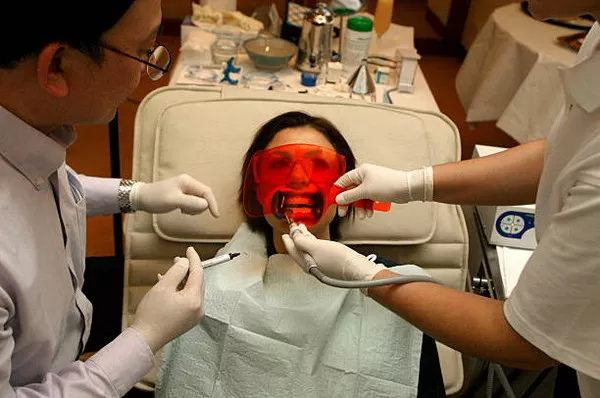Cosmetic vs. Medically Necessary
Orthodontic procedures, such as braces and clear aligners, are primarily considered cosmetic treatments aimed at improving the appearance of teeth and smile. As such, these procedures are not typically classified as medically necessary. Medicare, the federal health insurance program mainly for people aged 65 and older, does not generally cover cosmetic orthodontic treatments for adults. This means that most adults seeking braces or clear aligners to enhance their smile or dental aesthetics will need to pay for these services out of pocket or through private dental insurance plans that offer orthodontic benefits.
Coverage Exceptions
There are exceptions where orthodontic care might be covered by Medicare. If orthodontic treatment is deemed medically necessary or is closely related to other medical services, coverage may be available. For example, if an individual requires orthodontic intervention due to an accident, congenital deformity, or disease that necessitates restorative procedures, Medicare might cover these costs. These cases are evaluated on an individual basis to determine the medical necessity of the orthodontic treatment.
see also: How Long Orthodontic Treatment
Types of Orthodontic Treatments
Braces
Braces are a traditional orthodontic treatment used to correct misaligned teeth and bites. They involve attaching metal or ceramic brackets to the teeth. These brackets hold wires and elastic bands, which apply gentle pressure to gradually move the teeth into the desired position. The process requires regular adjustments by an orthodontist and can take several months to a few years to achieve the desired results.
Clear Aligners
Clear aligners are a modern alternative to traditional braces. They consist of a series of customized, transparent trays that fit snugly over the teeth. These aligners are designed to move teeth incrementally into the desired alignment. Patients receive a new set of aligners every few weeks, each set bringing the teeth closer to the final position. Clear aligners are popular because they are less noticeable and can be removed for eating and cleaning.
Retainers
Retainers are devices used after braces or aligner treatments to maintain the corrected alignment of teeth. They are typically worn for an extended period, sometimes only at night, to ensure that teeth do not shift back to their original positions. Retainers can be either fixed or removable, and their use is crucial in preserving the results of orthodontic treatment.
Medicare Part A and Part B Coverage
Part A
Medicare Part A covers hospital-related expenses, which might include costs associated with emergency or surgical orthodontic procedures that necessitate a hospital stay. For instance, if a patient requires hospitalization for a jaw surgery involving orthodontic work due to trauma, Part A might cover the hospital costs, although it would not cover the orthodontic procedure costs themselves unless they are part of the emergency treatment.
Part B
Medicare Part B typically does not cover orthodontic care, such as braces and aligners, when they are intended for cosmetic purposes. However, if the orthodontic treatment is considered medically necessary due to an accident, disease, or another health-related issue, Part B may cover some of the costs. For example, if an individual requires orthodontic intervention as part of a comprehensive treatment plan for a congenital anomaly or after a severe injury, Medicare Part B might provide coverage for the medically necessary orthodontic services.
see also: Unraveling the Need for Orthodontics
Conclusion
While most orthodontic procedures are viewed as cosmetic and thus not covered by Medicare, there are specific circumstances where coverage might be available if the treatment is medically necessary. Understanding these distinctions can help individuals navigate their options for orthodontic care under Medicare.
FAQs about Braces and Orthodontics Costs
1. Can braces be free in Australia?
In Australia, braces are not typically free for most people. However, there are a few ways to potentially reduce the cost:
Public Dental Services: Some states and territories offer orthodontic treatment through public dental services, but eligibility is often limited to children and teenagers under specific criteria, such as severe dental conditions or financial hardship.
Private Health Insurance: Many private health insurance policies offer coverage for orthodontic treatments, which can significantly reduce out-of-pocket costs.
Payment Plans: Orthodontists often provide payment plans that allow patients to spread the cost of treatment over several months or years.
2. How much do braces cost in Australia?
The cost of braces in Australia can vary widely based on the type of braces and the complexity of the treatment:
Traditional Metal Braces: Typically cost between AUD 4,500 and AUD 8,000.
Ceramic Braces: These can range from AUD 5,000 to AUD 8,500.
Lingual Braces: These are more expensive, usually between AUD 7,500 and AUD 12,500.
Invisalign (Clear Aligners): Generally cost between AUD 6,000 and AUD 9,000.
The final cost will depend on factors such as the duration of treatment, the severity of the dental issues being corrected, and the specific orthodontist.
3. How much is teeth orthodontics?
Teeth orthodontics, which encompasses various treatments to correct alignment issues, can vary in cost depending on the type of treatment:
Initial Consultation: Typically ranges from AUD 50 to AUD 250.
Braces: Costs range as mentioned above (AUD 4,500 to AUD 12,500).
Retainers: After braces, retainers cost between AUD 250 and AUD 600.
Other Orthodontic Appliances: Additional appliances, like expanders or headgear, can cost between AUD 1,000 and AUD 3,000.
Prices can vary based on the complexity of the case and the geographic location of the orthodontic practice.
4. Does Medicare cover braces for adults in Texas?
In the United States, including Texas, Medicare does not cover braces for adults. Medicare primarily covers medical services and treatments deemed necessary for overall health, but it does not typically include dental or orthodontic care. For adults looking for assistance with the cost of braces, there are a few alternatives:
Medicaid: In some cases, Medicaid might cover orthodontic treatment for adults if it is deemed medically necessary, but this varies by state and is generally limited.
Private Dental Insurance: Some private dental insurance plans offer partial coverage for orthodontic treatments, including braces.
Orthodontic Financing Plans: Many orthodontists offer financing options to help spread the cost of treatment over time.
You Might Be Interested In































